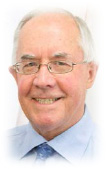|
|
|
| |
| ABSTRACT |
|
Growth factors can be isolated from bovine milk to form a whey growth factor extract (WGFE). This study examined whether WGFE promoted activation of the AKT/mTOR pathway enabling increased lean tissue mass and strength in resistance trained men. Forty six men with >6 months of resistance training (RT) experience performed 12 weeks of RT. Participants consumed 20 g/day of whey protein and were randomised to receive either 1.6 g WGFE/day (WGFE; n = 22) or 1.6 g cellulose/day (control, CONT; n = 24). The primary outcome was leg press one-repetition maximum (LP1-RM) which was assessed at baseline, 6 and 12 weeks. At baseline and 12 weeks body composition was assessed by dual energy x-ray absorptiometry, and muscle protein synthesis and gene expression were assessed (vastus lateralis biopsy) in a sub-sample (WGFE n = 10, CONT n = 10) pre- and 3 hr post-training. RT increased LP1-RM (+34.9%) and lean tissue mass (+2.3%; p < 0.05) with no difference between treatments (p > 0.48, treatment x time). Post-exercise P70s6k phosphorylation increased acutely, FOXO3a phosphorylation was unaltered. There were no differences in kinase signalling or gene expression between treatments. Compared with CONT, WGFE did not result in greater increases in lean tissue mass or strength in experienced resistance trained men. |
| Key words:
Nutritional supplement, lean tissue mass, gene expression, P70s6k, FOXO3a
|
Key
Points
- Resistance training increased phosphorylation and activation of p70s6k and suppressed Atrogin 1, but with no difference between treatment and control.
- Supplementation with WGFE during resistance training in resistance-trained young men did not enhance increases in muscle strength or lean tissue mass.
- Enhancement of strength increases with WGFE supplementation may occur in less well-trained individuals.
|
Resistance training can increase strength and skeletal muscle mass, but the adaptive responses can be enhanced through an increased protein intake, and in particular an increased intake of whey protein (Cribb et al., 2006; Miller et al., 2014). Whey protein is a rich source of amino acids including branched-chain amino acids (BCAA) that are critical for increasing muscle protein synthesis (Ha and Zemel, 2003) and also contains small amounts of growth factors which may contribute to increases in muscle size and strength (Walzem et al., 2002). Other dairy foods that are rich in growth factors have also been shown to improve muscular adaptations to resistance training, such as bovine colostrum. Bovine colostrum is the first milk produced by cows after calving and contains high concentrations of growth factors (Francis et al., 1988). Bovine colostrum has been shown to increase lean tissue mass (Antonio et al., 2001) and muscular power (Buckley et al., 2003) when consumed during resistance exercise training. However, the availability of colostrum is limited relative to that of normal cow’s milk. This has led to the development of chromatography technologies to extract growth factors from milk and/or whey (Francis et al., 1995) to produce growth factor-rich products to potentially increase muscular adaptations to exercise training. Whey Growth Factor Extract (WGFE) is a concentrated protein source consisting primarily of Lactoperoxidase (62%) and Lactoferrin (16%) proteins, but is also enriched in other growth factors such as insulin-like growth factors (Collier et al., 1991) that are naturally present in milk at low concentrations. A preliminary study using untrained volunteers indicated that WGFE supplementation (2 g/day) during 12 weeks of resistance training resulted in ~35% greater increase in leg strength (Carey et al., 2006; Crittenden et al., 2009). However, whether WGFE enhances strength increases in individuals who are already resistance trained is unclear. Muscle hypertrophy in response to resistance training requires activation of the AKT/mTOR pathway (Philp et al., 2011), which can be activated by IGF-1 (Rommel et al., 2001). This pathway activates the ribosomal complex and initiates translation downstream of the kinase P70s6k, increasing the rate of new protein synthesis. Simultaneously intense exercise may stimulate the ubiquitin proteasome pathway and the induction of muscle-specific E3-ubiquitin ligases, atrogin-1 and muscle RING finger-1 (MuRF1) which promote muscle turnover (Rahbek et al., 2015; Stefanetti et al., 2014). This is achieved by the E3- ubiquitin ligases regulating transcription of the Forkhead Box (FOXO) proteins, including the FOXO3 isoform (Okamoto et al., 2011). There is evidence that the ingestion of dairy protein can influence the mTOR pathway (Mitchell et al., 2015), possibly due to its IGF-1 content (Rommel et al., 2001), but not the FOXO pathway (Stefanetti et al., 2014). Studies are yet to address the actions of WGFE on these pathways. The aim of this study was to examine the effect of supplementation with WGFE on muscle strength, body composition and molecular pathways controlling skeletal muscle hypertrophy in men with a history of resistance exercise training. We hypothesised that WGFE would promote activation of the AKT/mTOR pathway and thus increase muscle anabolism enabling greater increases in lean tissue mass and strength. This study used a randomised, double-blind, placebo-controlled parallel design. All participants undertook a 12-week progressive resistance exercise training program and were allocated to concurrent daily consumption of 20 g of whey protein isolate together with 1.6 g of cellulose (CONT n = 24) or 1.6 g of WGFE (n = 22). A dose of 1.6 g/day, rather than the 2 g/day used in the preliminary study (Carey et al., 2006; Crittenden et al., 2009), was chosen to improve the commercial viability of the product as a supplement by reducing cost per effective dose. Ten participants from each group underwent vastus lateralis muscle biopsies pre- and post-training at baseline and after the 12-week training program. To account for potential confounding effects of differences in baseline muscle strength participants were allocated to treatment via minimisation (Altman and Bland, 2005) based upon peak isometric knee extension torque data collected during a pre-intervention familiarisation session. Participants were further stratified on the basis of training experience and age. Assessments at baseline and after the 12-week training program were performed at the same time of day to control for circadian variation. A diagram of the study protocol is provided in Figure 1. This study was approved by the Human Research Ethics Committee of the University of South Australia and conformed to the standards set by the Declaration of Helsinki. All participants provided written informed consent prior to participating. ParticipantsAdult males aged 18–30 years who had been participating in regular (≥2 sessions per week) resistance exercise training for at least six months immediately prior to the study were recruited via public advertisement. All participants reported being free from current or prior musculoskeletal injury which would prevent them from undertaking the training required for the study. Prospective participants were excluded if they were: (a) smokers or had recently (within the previous 6 months) quit smoking; (b) engaged in other athletic training that might confound the outcomes of the present study; (c) consumed prescription medication; (d) were allergic to/sensitive to/intolerant of dairy proteins or lactose; or (e) had recently (within the past 6 months) taken any form of supplement intended to increase physical performance or enhance recovery. All potential participants were administered the Sports Medicine Australia pre-exercise screening questionnaire (Sports Medicine Australia, 2005), with only those classified as low risk accepted into the study.
SupplementsAll study supplements were commercially available products (Murray Goulburn Co-Operative Co Ltd, Melbourne, Australia). The protein and growth factor composition of the WGFE supplement is provided in Table 1. Both WGFE and CONT groups consumed 20 g of whey protein isolate powder daily, mixed with 250 mL of water. Additionally both groups consumed four capsules each morning. Those randomised to the WGFE group consumed capsules each containing 400 mg of whey growth factor extract (i.e. 1.6 g dose; Catalyst, Murray Goulburn, Parkville, Australia), whilst each CONT capsule contained 400 mg of cellulose (i.e. 1.6 g dose). The capsules were identical in appearance. Supplements were consumed immediately upon rising on non-training days and immediately after training on training days. Compliance with supplementation was determined by capsule counting.
Anthropometry and body composition measuresAt baseline height was measured using a stadiometer (SECA, Hamburg). Body mass was measured using digital scales (Tanita Ultimate Scale, Tokyo) at baseline and after 6 and 12 weeks and mid-thigh girth was measured using a tape (Lufkin, Apex Tool Group, Maryland) following International Society for the Advancement of Kinanthropometry (ISAK) protocols (Marfell-Jones et al., 2007). Body composition was assessed at Weeks 0 and 12 using dual-energy x-ray absorptiometry (DXA, Lunar Prodigy, General Electric, Madison, WI, USA, using enCORE 2003 software version 7.52.002), with whole body and regional (right thigh) non-bone lean and fat tissue mass determined. The thigh segment assessed in the regional analysis was defined as the area bordered distally by a line passing through the medial and lateral joint spaces of the knee, parallel to the tibial plateau and proximally by a line passing immediately distal to the most inferior point of the ischial tuberosity and immediately proximal to the superior border of the greater trochanter. Medial and lateral borders included all lower limb soft tissue falling between the proximal and distal boundaries. Test-retest reliability for data extraction was assessed on baseline DXA scans from all 46 subjects. Region of interest data were extracted from the same scan on separate days, and reliability of extraction was excellent for both lean tissue mass (ICC ± 95%CI: 1.000 ± 0.001) and fat tissue mass (ICC ± 95%CI: 1.000 ± 0.001).
Strength measuresMaximal isometric torque of the right knee extensors was assessed using an isokinetic dynamometer (Biodex System 4, Biodex Medical Systems Inc, Shirley, NY). Participants were positioned on the dynamometer with the knee joint flexed to 90° and the axis of rotation of the knee joint aligned with the axis of rotation of the lever arm of the dynamometer. The lever arm of the dynamometer was strapped to the participants’ ankle at 3 cm above the medial malleolus. Seat position data (seat pan depth, seat rail location, lever arm length) were recorded to enable replication of position for subsequent testing. Three sub-maximal warm-up efforts of 5 seconds duration were performed with a 1-minute rest between efforts. After a 2-minute rest, three maximal 5-second isometric efforts were performed with a 1-minute rest between. Test-retest reliability was assessed using data from two testing sessions separated by 1-2 weeks on all 46 subjects. Reliability for maximal isometric torque was excellent (ICC ± 95%CI: 0.92 ± 0.05). One-repetition maximum (1RM) testing was performed for incline leg press following American College of Sports Medicine (ACSM) guidelines (American College of Sports Medicine, 2006). Non-biopsy participants began training 2–3 days after baseline testing, to allow for recovery from the 1RM testing procedure. Participants undergoing biopsies began training on the day of their biopsy, which occurred 4-7 days after baseline testing.
Resistance training interventionParticipants were familiarised with the strength testing protocols and the resistance training program prior to commencement of testing. Each participant underwent a 2-hour familiarisation session to ensure correct technique for all exercises comprising the testing and training program. The resistance training program consisted of a whole-body, non-periodised, progressive program designed to improve strength and hypertrophy. Participants trained at the research facility gymnasium three times per week with 24–72 hours between training sessions. The following exercises were performed in order: bench press, smith machine hack squat, lat pulldown, incline leg press, weighted dip, preacher bench biceps curl, seated row, seated calf raise, and sit-ups. All exercises (except sit-ups) were performed using custom-made resistance equipment (Maxim, Adelaide, Australia). Three sets of 12 repetitions per exercise were attempted (except for the sit-ups where three sets of 20 repetitions were attempted), with a 1-minute rest period between sets and a 2-minute rest period between exercises. Lifting was continued until concentric failure or the 12 or 20 repetition target was reached. The number of repetitions per set was recorded by each participant in a training diary, with participant-selected increases (typically 2.5 to 10.0 kg, dependent upon the exercise) occurring when the participant could successfully perform three sets of 12 repetitions at the target resistance. Progression for the unweighted sit-ups task occurred through increases in the numbers of repetitions, with a 2-repetition increase occurring when three sets of 20 repetitions could be successfully performed. The total volume of training per treatment group was quantified as the total number of exercises x number of sets x number of repetitions x resistance (kg), and was expressed per training session. All training sessions were supervised in order to ensure correct technique was used and compliance with the training program.
Muscle biopsyA sub-population from each treatment group (WGFE and CONT, n=10 per group) underwent muscle biopsies at 1 hour pre- and 3 hours post-training at Weeks 0 and 12. Muscle tissue (~100 mg) from the right vastus lateralis muscle ~15 cm above the patella was harvested by a registered Medical Practitioner using the percutaneous biopsy technique (Bergstrom) modified to include suction under a 1% lignocaine local anaesthetic. Tissue was immediately visualised at x10 magnification, blotted free of blood and cleaned of any connective tissue, and then snap frozen in liquid nitrogen and stored at -80° C. Post-training biopsy samples were collected through the same incision but with the biopsy needle angled inferiorly and medially to avoid the pre-training biopsy site, with different incisions at Week 0 and 12.
Western blottingTissue samples (10 mg) were homogenised in cell lysis buffer following the manufacturer’s instructions (Biorad, Hercules, CA) using a tissue disruptor for 20 seconds at a speed setting of 5.5 (FastPrep, Thermo-Fisher Scientific, Australia). The homogenate was frozen at -80° C for 10 min then rotated at 4° C for 1 hour. The lysate was centrifuged at 13000 rpm at 4° C for 10 minutes and the supernatant collected. Protein concentration was determined using the BCA protein assay kit, following the manufacturer’s instructions (Thermo-Fisher Scientific, Australia). Protein (50 µg) was separated by 8% SDS-PAGE. The proteins were transferred onto a nitrocellulose membrane and blocked in 5% bovine serum albumin (BSA) in Tris Buffered Saline with 0.1% Tween 20 (TBST) for 2 hours at room temperature. Primary antibodies, diluted in blocking buffer (1:1000) were applied and incubated overnight at 4° C; p-mTOR (Ser2448), mTOR, p-p70S6K (Thr389), p70S6K, p-Akt (Ser473), Akt, p-FOXO3a (Ser253), and FOXO3a (Cell Signalling Technology Inc., Danvers, MA). Membranes were washed six times for 5 minutes with TBST and incubated for 1 hour at room temperature with corresponding HRP-conjugated antibodies; rabbit (Merck Biosciences, Australia). Membranes were then washed six times for 5 minutes with TBST and proteins were detected by enhanced chemiluminescence (Western Lighting Chemiluminescence Reagent Plus, Perkin Elmer Lifesciences, Boston, MA). The density of the bands was quantified using a Kodak Image Station (Model: 440CF, Eastman Kodak Company, USA) and quantified by densitometry software (Kodak 1D 3.5). Membranes were stripped using Restore™ Western Blot Stripping Buffer (Thermo-Fisher Scientific, Australia) for 30 minutes before being re-probed with the total antibody, to confirm that changes observed in phosphorylation were not due to changes in total protein levels.
Reverse transcription polymerase chain reaction (RT-PCR)RNA was extracted from the vastus lateralis biopsies (5-7 mg) using the Totally RNA kit (Applied Biosystems, Foster City, CA). RNA quality and concentration were determined (Nanodrop 1000, Thermo-Fisher Scientific, Australia). First-strand cDNA was generated using 0.5 µg of total RNA via the RNA-to-cDNA kit (Applied Biosystems, Foster City, CA). RT-PCR was performed in triplicate using the ABI7500 sequence detection system (Applied Biosystems, Foster City, CA), with reaction volumes of 14 µl, containing Power SYBR Green (Applied Biosystems, Foster City, CA), forward and reverse primers and cDNA template (1.25 ng/ul). Data were analysed using a comparative critical threshold (Ct) method where the amount of target was normalised to the amount of endogenous control, relative to control value given by 2-ΔΔCt (Applied Biosystems, Foster City, CA). The efficacy of Cyclophilin, 18S, TBP and GAPDH as endogenous controls was examined using the equation 2-ΔCt. GAPDH gene expression showed no change in response to exercise (data not shown) and was therefore used for normalisation of the target gene.
Dietary intakeFood intakes were recorded at baseline, Week 6 and Week 12 using 3-day weighed food records which included at least one weekend day. Energy intake, macro and micronutrient profiles were calculated using Foodworks® Nutritional software (Xyris Software, Pty Ltd, Highgate Hill, Queensland; Australia).
Statistical analysisData were only analysed for participants who completed the intervention. Data are presented throughout as means±standard deviation (SD) unless otherwise indicated. Student’s t-tests were used to compare group means at baseline. To determine the effects of the treatment, time of measurement and their interactions on the outcome measures, data were analysed using a Random Effects Model (REM). Parameters were established using restricted maximum likelihood (REML) rather than maximum likelihood (ML) due to the relatively small sample. Post-hoc testing was performed to localise the main effects, where relevant, using sequential Bonferroni corrected t-tests. The Pearson correlation was used to determine relationships between parameters. Due to the potential for baseline strength to influence the magnitude of increase in strength participants were stratified on the basis of baseline leg strength (isometric knee extension strength) and secondary analysis was undertaken to evaluate whether there were differences in strength gains in different tertiles of baseline strength. NCSS version 7.0 (NCSS, Kaysville, USA) or SPSS version 20 (IBM Corp, New York, USA) was used for all statistical analysis. The level of significance was set at α of 0.05.
ParticipantsA total of 93 prospective participants were screened for inclusion. Sixty eight participants were enrolled into the study and completed baseline testing, with 46 completing the study (Figure 2). These participants were highly compliant to the training (completing 92% of scheduled training sessions) and the supplement protocols (96% of supplement capsules consumed). At baseline the CONT and WGFE groups were well balanced by age, height, mass and training experience (Table 2).
Leg strength and training loadData for leg strength and loads lifted during training are presented in Table 3. Both CONT and WGFE increased isometric knee extensor strength and leg press strength (LP1-RM; primary outcome) during the study period, but there was no difference between groups (p > 0.85, treatment x time). Secondary analysis of incline leg press strength data showed that baseline strength was inversely correlated with the change in strength by Week 12 in the WGFE group (r = -0.49; P=0.03) but not in the CONT group (r = -0.05; p = 0.80). Accordingly, for participants in the lowest tertile of leg press strength at baseline there was a significantly greater increase in leg press strength in those who consumed WGFE compared with CONT (p = 0.002; treatment effect).
Anthropometry and body compositionData for anthropometric and body composition measures are reported in Table 4. Body mass increased during the study period (p < 0.05 for time), with no difference between treatments (p = 0.98, treatment x time). The body mass increases were driven by increases in non-bone lean tissue mass which also increased (p < 0.001 for time), with no difference between treatments (p = 0.85, treatment x time). Regional analysis of the thigh revealed small but significant increases in non-bone lean tissue mass (p < 0.05 for time), with no difference between treatments (p = 0.37, treatment x time). Participants in the lowest tertile of leg press strength at baseline had significantly less non-bone lean tissue in their thighs compared with those in the upper tertiles (p < 0.05). However, the increases in non-bone lean tissue mass of the thigh during the training period for participants in this lower tertile did not differ between treatments (p = 0.85 treatment x time). Non-bone lean tissue mass in the thighs was strongly correlated with leg press strength at baseline (r = 0.55, p < 0.001), but changes in thigh non-bone lean tissue mass by Week 12 were not correlated with changes in leg press strength (r = 0.08, p = 0.63). Thigh girth increased during the study period (p < 0.001 for time), but there was no significant treatment x time interaction (p = 0.72).
Protein levels and gene expressionThe ratios of phosphorylated to non-phosphorylated protein, and mRNA expression data, are presented in Table 5. The only differences in treatment effects on protein phosphorylation ratios were for mTOR and p70s6k. At Week 12 there was no difference in pre-exercise mTOR protein phosphorylation ratios between treatments (p = 0.51), but mTOR phosphorylation increased significantly post-exercise in the WGFE group (p < 0.01) but not CONT. In addition there was a large increase in p70s6k protein phosphorylation post-exercise at Week 0 in CONT (385.9%, p = 0.04), but no significant change in the WGFE group. In relation to effects on mRNA expression, in the WGFE group pre-exercise Atrogin-1 gene expression levels at Week 12 were significantly higher than at Week 0 (p < 0.05) and decreased significantly from pre- to post-exercise (-49.7%, p = 0.03). No such changes were evident in CONT.
Dietary intakeThere were no differences in energy or macronutrient intake between groups at baseline (p > 0.17, Table 6). Energy intake, protein intake and carbohydrate intakes decreased during the study period (p < 0.02), but with no difference between groups (p > 0.18 treatment x time). Fat intake did not change (p = 0.32).
The main finding of the present study was that supplementation with 1.6 g/day of WGFE during 12 weeks of resistance training in resistance-trained young men did not enhance increases in muscle strength or lean tissue mass. Although there was a large increase (i.e. 34%) in the primary outcome of incline leg press strength across the 12-week training program, strength improvements were similar in both treatment groups and thus independent of WGFE supplementation. The magnitude of increase (% increase from baseline) in incline leg press strength in the present study was only ~25-30% of the increase reported in the previous study in untrained men (Carey et al., 2006; Crittenden et al., 2009) which found that WGFE promoted greater increases in strength. It is well established that the magnitude of training adaptations are contingent upon training status, and that the gains in muscular strength that can be achieved decline with increased training experience (Peterson et al., 2005), so it was not unexpected that the magnitude of strength increase in the present study would be smaller. However, in the present study there was no evidence of WGFE enhancing strength increases as had been reported previously in untrained men (Carey et al., 2006; Crittenden et al., 2009). This may have been due to the lower dose of 1.6 g/day used in the present study compared with the 2 g/day dose used in the previous study. Interestingly though, there was an inverse relationship between leg press strength at baseline and the strength increase in the WGFE treatment group that was not apparent in CONT, indicating that individuals taking WGFE who were less strong at baseline achieved larger gains than stronger individuals. Secondary analysis of the leg press data comparing effects of WGFE and control across tertiles of baseline leg press strength revealed that in the lowest tertile, participants who consumed WGFE achieved greater strength increases than those who consumed CONT. This finding is consistent with that of our earlier study (Crittenden et al., 2009) which reported greater increases in strength with WGFE in untrained novices in so far as individuals with lower levels of strength, who may be less well-trained and therefore more similar to novices, appear to benefit from WGFE supplementation while better-trained individuals do not. Thus, WGFE supplementation appears to provide no additional benefit for experienced lifters who are already reasonably strong, but may provide benefits for less strong or novice lifters. Anthropometric and body composition changes in this study were small and did not differ between treatment groups. Despite the small magnitude of whole body mass changes in this study, the changes detected were primarily the result of increases in non-bone lean tissue. These non-bone lean tissue mass increases, in combination with the small increases observed in thigh girth, suggest that skeletal muscle hypertrophy was induced by the training undertaken, but there was no additional benefit of WGFE supplementation. The increases in body weight and non-bone lean tissue mass were achieved despite decreases in energy, protein and carbohydrate intakes during the study in both groups. The reduction in dietary intake might have been a result of the daily supplementation with 20 g of whey protein in both treatment groups as whey protein increases satiety and suppresses food intake compared with carbohydrates or other proteins (Luhovyy et al., 2007). Control of skeletal muscle hypertrophy and atrophy resides, in part, within the mTOR and the ubiquitin-proteasome pathways respectively (Glass, 2005). Increased phosphorylation and activation of the effector kinase, p70s6k, which interacts with the ribosomal protein S6, was measured within 3 hours of the resistance exercise bouts. This is consistent with previous studies demonstrating rapid activation with resistance exercise, particularly with the ingestion of supplemental whey protein (Burke et al., 2012; Farnfield et al., 2009). However, WGFE supplementation did not significantly alter the response, either at the first exercise session or at the end of the intervention period. Upstream of p70s6k, the phosphorylation of the Ser2448 residue of mTOR tended to increase with exercise only with WGFE supplementation. It is not clear what impact this phosphorylation site has on the kinase activity of mTOR, with the suggestion that this is a feedback inhibitory phosphorylation site. There was no activation of FOXO3a phosphorylation, consistent with previous studies demonstrating either suppressed or unchanged phosphorylation in the first few hours after resistance exercise (Stefanetti et al., 2014). Correspondingly there was a tendency for Atrogin-1 mRNA to be suppressed post-exercise, with no significant treatment effect. Collectively, these signalling and molecular data, plus analysis of the expression of MHC genes, fail to demonstrate a significant action of WGFE on either hypertrophic or atrogenic cellular pathways. Supplementation with 1.6 g/day of WGFE during resistance exercise training might provide an advantage for increasing strength in untrained individuals (i.e. novices) or individuals who are less well-adapted to training, but not for individuals who are already well adapted to strength training.
| ACKNOWLEDGEMENTS |
We thank Professor Garry Scroop (MBBS, MD, PhD) for collecting the muscle biopsy samples for this study. All authors contributed to study design. MJD collected the data. MJD, JDB, MKC and DC-S analysed the data. All authors contributed to data interpretation and manuscript preparation. The study was funded by Murray Goulburn Co-Operative Co Ltd. A Brown is an employee of Murray Goulburn Co-operative Co Ltd. The other authors have no conflicts of interest. MT Haren was supported by a Post-doctoral Training Fellowship (Public Health) from the National Health and Medical Research Council (NHMRC) of Australia (# 511345). The experiments described comply with the current laws of Australia, where the research was performed. |
|
| AUTHOR BIOGRAPHY |
|
 |
Michael J. Dale |
| Employment: Alliance for Research in Exercise, Nutrition and Activity (ARENA), Sansom Institute for Health Research, University of South Australia, Adelaide, South Australia. |
| Degree: BAppSci(Hum Mov) (Hon) PhD |
| Research interests: Resistance training, physical fitness, and anthropometry in military populations. |
| E-mail: michael.dale@unisa.edu.au |
| |
 |
Alison M. Coates |
| Employment: Alliance for Research in Exercise, Nutrition and Activity, Sansom Institute for Health Research, University of South Australia, Adelaide, South Australia. |
| Degree: BSc; BSc Hons; PhD |
| Research interests: Benefits of bioactive nutrients for cardiometabolic and cognitive function. |
| E-mail: alison.coates@unisa.edu.au |
| |
 |
Peter R.C. Howe |
| Employment: Professor of Nutrition Research at the University of Newcastle, Professor of Clinical Nutrition, University of Southern Queensland and Joint Editor in Chief of Nutrients. |
| Degree: BSc, MSc, PhD, FNSA, RNutr |
| Research interests: Cardiovascular and metabolic health benefits of omega-3 fatty acids and other bioactives, his goal is substantiating health benefits of functional foods and nutraceuticals through collaborative |
| E-mail: peter.howe@newcastle.edu.au |
| |
 |
Grant R. Tomkinson |
| Employment: Kinesiology and Public Health Education, University of North Dakota, Grand Forks, North Dakota, USA; and Alliance for Research in Exercise, Nutrition and Activity (ARENA), Sansom Institute for Health Research and School of Health Sciences, University of South Australia, Adelaide, South Australia. |
| Degree: BSpSc BAppSc(Hon) PhD |
| Research interests: Physical fitness, physical activity and adiposity of young people, and the measurement of body size and shape of people of all ages. |
| E-mail: grant.tomkinson@und.edu |
| |
 |
Matthew T. Haren |
| Employment: Adjunct Research Fellow School of Health Sciences, University of South Australia, Adelaide South Australia. |
| Degree: BApp Sc; B Health Sc Hons; PhD |
| Research interests: The interaction of chronic disease and ageing processes, particularly in the context of sarcopenia, frailty and age-related disability. |
| E-mail: matthew.haren@gmail.com |
| |
 |
Andrew Brown |
| Employment: Murray Goulburn Co-operative Co Ltd, Southbank, Victoria. |
| Degree: BAgrSc Hons; PhD |
| Research interests: The isolation, application, production and commercialisation of bioactive proteins present in bovine milk. |
| E-mail: andrew.brown@mgc.com.au |
| |
 |
Marissa Caldow |
| Employment: Basic and Clinical Myology Laboratory, Department of Physiology, University of Melbourne, Australia. |
| Degree: BBiomed Sc Hons; PhD |
| Research interests: The fundamental mechanisms responsible for altered skeletal muscle structure and function in response to disease, aging, nutrition and exercise. |
| E-mail: marissa.caldow@unimelb.edu.au |
| |
 |
David Cameron-Smith |
| Employment: Liggins Institute, University of Auckland, New Zealand. |
| Degree: B Sc Hons; PhD |
| Research interests: Understanding the mechanisms initiating and maintaining the loss of muscular strength in aging. His clinical studies include the analysis of dietary and exercise interventions. |
| E-mail: d.cameron-smith@auckland.ac.nz |
| |
 |
Jonathan D. Buckley |
| Employment: Alliance for Research in Exercise, Nutrition and Activity (ARENA), Sansom Institute for Health Research, University of South Australia, Adelaide, South Australia.. |
| Degree: BApp Sc; B Sc Hons; PhD |
| Research interests: The role of nutrition and exercise in improving health and physical function in populations ranging from elite athletes to patients with chronic disease. |
| E-mail: jon.buckley@unisa.edu.au |
| |
|
| |
| REFERENCES |
 Altman D., Bland M. (2005) Treatment allocation by minimisation. British Medical Journal 330, 843-. |
 American College of Sports Medicine (2006) ACSM's Guidelines for Exercise Testing and Prescription. Baltimore. Lippincott Williams and Wilkins. |
 Antonio J., Sanders M., Van Gammeren D. (2001) The effects of bovine colostrum supplementation on body composition and exercise performance in active men and women. Nutrition 17, 243-247. |
 Buckley J., Brinkworth G., Abbott M. (2003) Effect of bovine colostrum on anaerobic exercise performance and plasma insulin-like growth factor I. Journal of Sports Sciences 21, 577-588. |
 Burke L.M., Hawley J.A., Ross M.L., Moore D.R., Phillips S.M., Slater G.R., Stellingwerff T., Tipton K.D., Garnham A.P., Coffey V.G. (2012) Preexercise aminoacidemia and muscle protein synthesis after resistance exercise. Medicine and Science in Sports and Exercise 44, 1968-77. |
 Carey K., Larsen A., Rowney M., Cameron-Smith D. (2006) . Application of Whey Proteins to Enhance the Molecular Adaptations and Strength Gains Following Resistance Exercise Training , 279-291. |
 Collier R.J., Miller M.A., Hilderbeandt J.R., Torkelson A.R., White T.C., Madsen K.S., Vicini J.L., Eppard P.J., Lanza G.M. (1991) Factors affecting insulin like growth factor 1 concentration in bovine milk. Journal of Dairy Science 74, 2905-2911. |
 Cribb P.J., Williams A.D., Carey M.F., Hayes A. (2006) The effect of whey isolate and resistance training on strength, body composition, and plasma glutamine. International Journal of Sport Nutrition and Exercise Metabolism 16, 494-509. |
 Crittenden R., Buckley J., Cameron-Smith D., Brown A., Thomas K., Davey S., Hobman P. (2009) Functional dairy protein supplements for elite athletes. Australian Journal of Dairy Technology 64, 133-137. |
 Farnfield M.M., Carey K.A., Gran P., Trenerry M.K., Cameron-Smith D. (2009) Whey protein ingestion activates mTOR-dependent signalling after resistance exercise in young men: a double-blinded randomized controlled trial. Nutrients 1, 263-275. |
 Francis G.L., Regester G.O., Webb H.A., Ballard F.J. (1995) Extraction from cheese whey by cation-exchange chromatography of factors that stimulate the growth of mammalian cells. Journal of Dairy Science 78, 1209-1218. |
 Francis G.L., Upton F.M., Ballard F.J., McNeill K.A., Wallace J.C. (1988) Insulin-like growth factors 1 and 2 in bovine colostrum. Sequences and biological activities compared with those of a potent truncated form. Biochemical Journal 251, 95-103. |
 Glass D (2005) Skeletal muscle hypertrophy and atrophy signalling pathways. International Journal of Biochemistry and Cell Biology 37, 1974-1984. |
 Ha E., Zemel M.B. (2003) Functional properties of whey, whey components, and essential amino acids: mechanisms underlying health benefits for active people (review). Journal of Nutritional Biochemistry 14, 251-258. |
 Luhovyy B.L., Akhavan T., Anderson G.H. (2007) Whey proteins in the regulation of food intake and satiety. Journal of the American College of Nutrition 26, 704S-12S. |
 Marfell-Jones M., Olds T., Stewart A., Carter L. (2007) International standards for anthropometric assessment. Potchefstroom. International Society for the Advancement of Kinathroopometry. |
 Miller P.E., Alexander D.D., Perez V. (2014) Effects of Whey Protein and Resistance Exercise on Body Composition: A Meta-Analysis of Randomized Controlled Trials. Journal of the American Colege ofl Nutrition 33, 163-175. |
 Mitchell C.J., Della Gatta P.A., Petersen A.C., Cameron-Smith D., Markworth J.F. (2015) Soy protein ingestion results in less prolonged p70S6 kinase phosphorylation compared to whey protein after resistance exercise in older men. Journal of the International Society of Sports Nutrition 12, 6-. |
 Okamoto T., Torii S., Machida S. (2011) Differential gene expression of muscle-specific ubiquitin ligase MAFbx/Atrogin-1 and MuRF1 in response to immobilization-induced atrophy of slow-twitch and fast-twitch muscles. Journal of Physiological Sciences 61, 537-546. |
 Peterson M.D., Rhea M.R., Alvar B.A. (2005) Applications of the dose-response for muscular strength development: a review of meta-analytic efficacy and reliability for designing training prescription. Journal of Strength and Conditioning Research 19, 950-958. |
 Philp A., Hamilton D.L., Baar K. (2011) Signals mediating skeletal muscle remodeling by resistance exercise: PI3-kinase independent activation of mTORC1. Journal of Applied Physiology 110, 561-568. |
 Rahbek S.K., Farup J., de Paoli F., Vissing K. (2015) No differential effects of divergent isocaloric supplements on signaling for muscle protein turnover during recovery from muscle-damaging eccentric exercise. Amino Acids 47, 767-778. |
 Rommel C., Bodine S.C., Clarke B.A., Rossman R., Nunez L., Stitt T.N., Yancopoulos G.D., Glass D.J. (2001) Mediation of IGF-1-induced skeletal myotube hypertrophy by PI(3)K/Akt/mTOR and PI(3)K/Akt/GSK3 pathways. Nature Cell Biology 3, 1009-1013. |
 Sports Medicine Australia (2005) Sports Medicine Australia (SMA) pre-exercise screening system 2005. Australian Government Department of Health and Ageing. |
 Stefanetti R.J., Lamon S., Rahbek S.K., Farup J., Zacharewicz E., Wallace M.A., Vendelbo M.H., Russell A.P., Vissing K. (2014) Influence of divergent exercise contraction mode and whey protein supplementation on atrogin-1, MuRF1, and FOXO1/3A in human skeletal muscle. Journal of Applied Physiology 116, 1491-502. |
 Walzem R.L., Dillard C.J., German J.B. (2002) Whey components: millennia of evolution create functionalities for mammalian nutrition: what we know and what we may be overlooking. Crit Rev Food Sci Nutr 42, 353-375. |
|
| |
|
|
|
|

